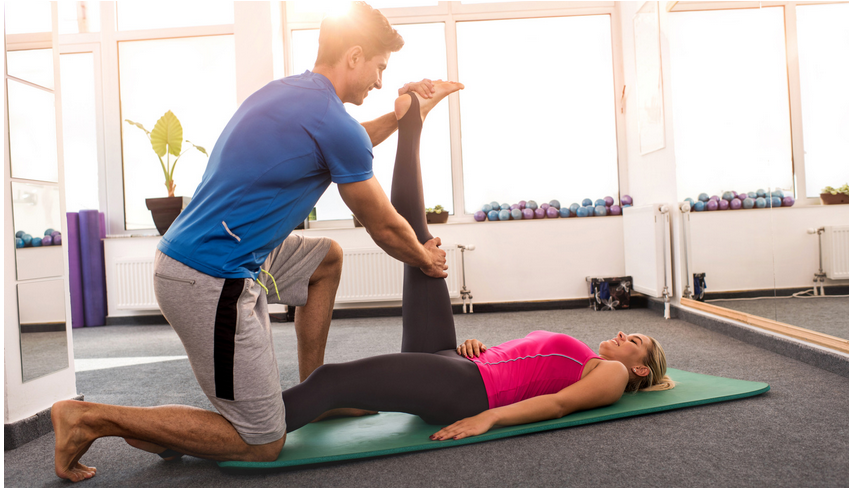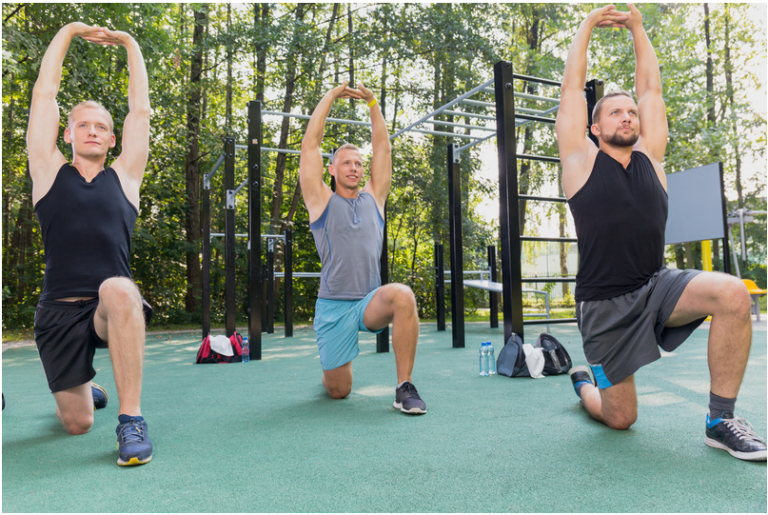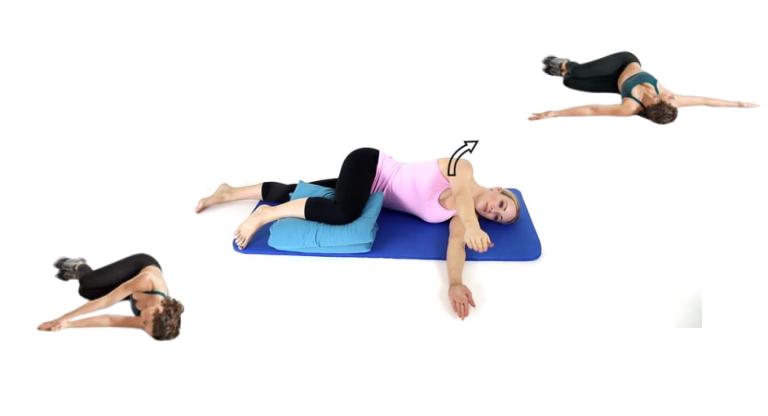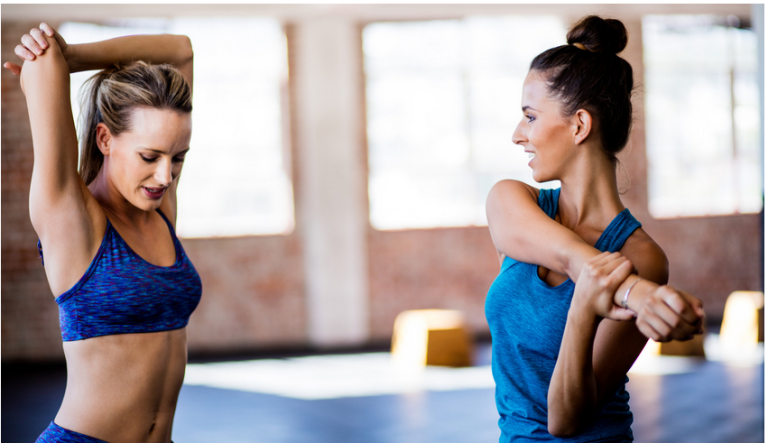
How Many Exercises Encompass Stretching in the Human Body?

Stretching is an essential part of any exercise program. Aerobic stretching helps improve flexibility, reduce muscle soreness, prevent injuries, enhance performance, and boost your muscular endurance. But how many exercises encompass stretching in the human body? And what are the best full-body stretches to do after a workout?
In this blog post, we will answer these questions and more. We will explain the benefits of full-body stretches, the types of stretching, and the muscles involved. We will also show you 9 effective post-workout stretches that target all the major muscle groups in your body. By the end of this post, you will have a better understanding of how stretching works and how to do it properly.
Learn how active isolated stretching can boost flexibility, mobility, and performance. Read this article: What Sets Active Isolated Stretching Apart from Other Stretching Exercises? from the Stretching Program and see the difference.
What are the Benefits of Full-Body Stretches?

Full-body stretches are exercises that involve stretching multiple muscles or joints at the same time. They are different from isolated stretches, which focus on one specific muscle or joint. Full-body stretches have several advantages over isolated stretches, such as:
- They save time and energy. You can stretch more muscles in less time with full-body stretches than with isolated stretches. This is especially useful if you have a busy schedule or a limited attention span.
- They improve your range of motion and can increase the intensity and endurance of your physical activities. Range of motion is the degree of movement that a joint can perform. Performing full-body stretches with intensity can enhance your muscular endurance by loosening up the muscles and tendons that surround your joints. This allows you to move more freely and comfortably in your daily activities and sports.
- They enhance your coordination and balance. Full-body stretches require you to engage your core muscles and stabilize your body while stretching. This helps improve your posture, alignment, and stability. It also trains your brain and nervous system to coordinate your movements better and prevent falls.
- They reduce your stress and tension, increasing your capacity for enduring intense physical activity. Full-body stretches can help you relax and calm your mind after a stressful or intense workout. They can also release endorphins, which are natural chemicals that make you feel good and reduce pain. Stretching can also improve your blood circulation, which can lower your blood pressure and heart rate.
Discover the power of effective stretching exercises for squats and how they can revolutionize your flexibility. Explore this comprehensive guide to unlock the secrets of enhancing your squat performance.
What are the Types of Stretching?
There are two main types of stretching: static and dynamic. Static stretching involves holding a stretch for a certain period of time, usually 15 to 30 seconds. Dynamic stretching involves moving your joints and muscles through their full range of motion, usually in a rhythmic and controlled manner.
Both types of stretching have their pros and cons, and they serve different purposes. Static stretching is more effective for increasing your flexibility and relaxing your muscles. Dynamic stretching is more effective for warming up your muscles and preparing them for activity. Therefore, it is recommended to do dynamic stretching before your workout and static stretching after your workout.
How Many Exercises Encompass Stretching in the Human Body?
The answer to this question depends on how you define an exercise and how you count the muscles in the human body. There are about 600 muscles in the human body, but not all of them are involved in stretching. Some muscles are more important than others for stretching, such as the ones that support your spine, hips, shoulders, and knees.
According to some sources, there are about 34 major muscle groups in the human body that can be stretched. However, this number may vary depending on how you classify and group the muscles. For example, some sources may consider the hamstrings as one muscle group, while others may divide them into three separate muscles: the biceps femoris, the semitendinosus, and the semimembranosus.
Regardless of the exact number, the point is that there are many exercises that encompass stretching in the human body. In fact, there are too many to count. However, you don’t need to do all of them to get the benefits of stretching. You just need to do a few that target the most important and commonly tight muscles in your body.
What are the Best Full-Body Stretches to Do After a Workout?

You can do nine full-body stretches after a workout to improve flexibility, reduce soreness, and prevent injuries. These stretches cover all the major muscle groups in your body and can be done in 15 to 20 minutes. You will need a mat, a towel, and a chair for some of these stretches. Breathe deeply and hold each stretch for 15 to 30 seconds. Refrain from bouncing, force, or overstretching your muscles to avoid reducing your muscular endurance and intensity in physical activities. Listen to your body and stop if you feel any pain or discomfort.
1. Hamstring Stretch
The hamstrings are the muscles at the back of your thighs. They are responsible for bending your knees and extending your hips. They are often tight and stiff from physical activities like sitting, running, or cycling, contributing to their muscular endurance.
To stretch your hamstrings:
2. Quadriceps Stretch
The quadriceps are the muscles at the front of your thighs. These muscles are responsible for straightening your knees, flexing your hips, and contributing to your endurance in aerobic activities. They are often sore and tight from squatting, jumping, or climbing stairs.
For cardiovascular health and intense muscle endurance, stretch your quadriceps by standing up and holding onto a chair or a wall for balance. Bend your right knee and bring your right heel towards your butt. Grab your right foot with your right hand and gently pull it closer to your butt. Keep your knees together and your hips forward. You should feel a stretch along the front of your right thigh. Hold for 15 to 30 seconds, then switch legs and repeat.
3. Quadriceps Stretch
The calves are the muscles at the back of your lower legs. They are responsible for pointing your toes and pushing off the ground. They are often tight and crampy from walking, running, or wearing heels.
Stand up and place you:
Lean forward and push your hips towards the wall or the chair. You should feel a stretch along the back of your right lower leg. Hold for 15 to 30 seconds, then switch legs and repeat.
4. Quadriceps Stretch
The hip flexors are muscular, and at the front of your hips, they play a key role in running for aerobic endurance. They are responsible for lifting your knees and bending your waist. They are often tight and weak from sitting, cycling, or running.
To stretch your hip flexors:
5. Glute Stretch
The glutes are the muscles at the back of your hips. They are responsible for extending your hips and stabilizing your pelvis. They are often tight and sore from sitting, squatting, or running.
To stretch your glutes:
6. Back Stretch
The back has many muscles supporting your spine, shoulders, and ribs. They are responsible for bending, twisting, and extending your trunk. They are often tense and achy from sitting, lifting, or twisting.
Lie on a mat and hug your knees to your chest for back exercises to increment your back’s endurance. Rock gently from side to side to massage your lower back. Then, extending your arms to the sides and dropping your knees to the right contributes to your body’s cumulative endurance. Turn your head to the left and look at your left hand. Keep your shoulders on the floor and your hips stacked. You should feel a stretch along the left side of your back. Hold for 15 to 30 seconds, then switch sides and repeat.
7. Chest Stretch
The chest comprises two muscles: the pectoralis major and the pectoralis minor. They are responsible for moving your arms across your chest and rotating your shoulders. They are often tight and rounded from slouching, typing, or driving.
Stand up and interlace:
8. Shoulder Stretch
The shoulders comprise three muscles: the deltoids, the rotator cuff, and the trapezius. They are responsible for raising, lowering, and rotating your arms. They are often stiff and sore from carrying, reaching, or throwing.
To stretch your shoulders:
9. Neck Stretch
The neck comprises several muscles that support your head and connect it to your shoulders and upper back. They are responsible for turning, tilting, and nodding your head. They are often tight and sore from looking at screens, driving, or sleeping.
To stretch your neck, sit or stand up straight and relax your shoulders. Slowly tilt your head to the right and bring your right ear towards your right shoulder. You can use your right hand to press your head down gently for a deeper stretch. Keep your left shoulder down and away from your ear. You should feel a stretch along the left side of your neck. Hold for 15 to 30 seconds, then switch sides and repeat.
10. Triceps Stretch
The triceps are the muscles at the back of your upper arms. These muscles, responsible for straightening your elbows and extending your arms, also play an important role in improving your muscular endurance. They are often tight and tired from pushing, lifting, or throwing.
To stretch your triceps:
Summary and Conclusion
In this blog post, we have answered the question of how many exercises encompass stretching in the human body. We have also shown you 9 full-body stretches that you can do after a workout to improve your flexibility, reduce your soreness, and prevent injuries.
Here are the main points to remember:
- Full-body stretches are exercises that involve stretching multiple muscles or joints at the same time. They have many benefits, such as saving time, improving range of motion, enhancing coordination and balance, and reducing stress and tension.
- There are two main types of stretching: static and dynamic. Static stretching involves holding a stretch for a certain period of time, while dynamic stretching involves moving your joints and muscles through their full range of motion. It is recommended to do dynamic stretching before your workout and static stretching after your workout.
- There are many exercises that encompass stretching in the human body, but you don’t need to do all of them to get the benefits of stretching. You just need to do a few that target the most important and commonly tight muscles in your body, such as the hamstrings, quadriceps, calves, hip flexors, glutes, back, chest, shoulders, neck, and triceps.
- To do the full-body stretches, you will need a mat, a towel, and a chair. You should breathe deeply and hold each stretch for 15 to 30 seconds. You should not bounce, force, or overstretch your muscles. You should listen to your body and stop if you feel any pain or discomfort.
We hope you enjoyed this blog post and learned something new. If you want to learn more about stretching, fitness, and health, you can visit our website at https://stretchingprogram.com/ and study with quizlet and memorize flashcards containing terms like exercise, stretch, encompass stretching in the human body, and more. You can also ask questions and get answers from experts and peers on our platform. Thank you for reading and happy stretching! 😊



